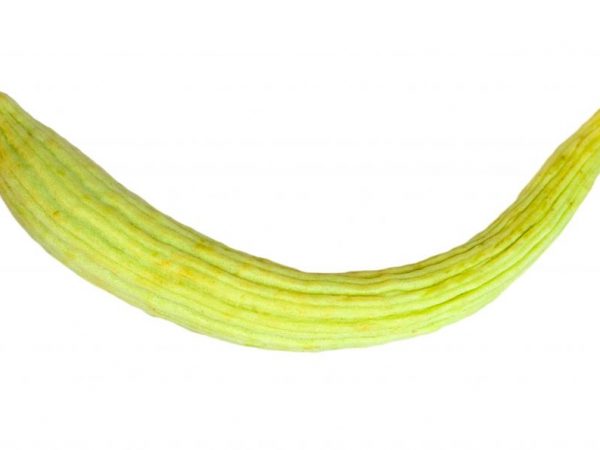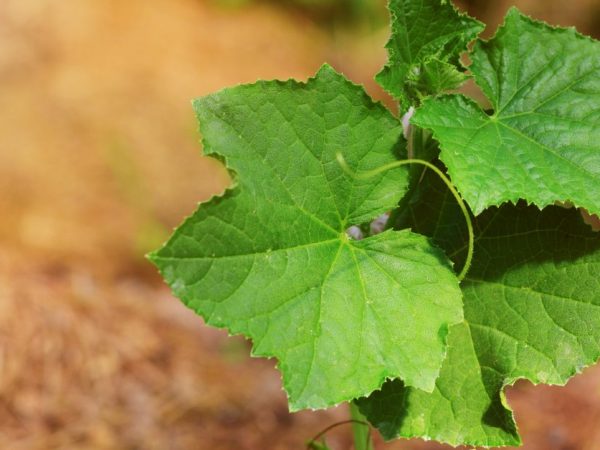Description of Armenian cucumber
The Armenian cucumber is considered to be a hybrid of a common cucumber and a melon. This culture belongs to exotic melons and gourds. The variety is sometimes referred to as Silver Melon, as the surface of the fruit is pubescent. The taste and shape of the fruit are quite unusual for the eyes of an ordinary person, moreover, the Armenian cucumber has a melon aroma.

Description of Armenian cucumber
Variety characteristic
The vegetable was bred at the beginning of the twentieth century in Armenia, as a result of which it got its name. In 2003, this variety earned a place in the State Register of the Russian Federation.
Description of the plant
Thanks to its versatility, the melon flavored Armenian cucumber can be grown both in a greenhouse and in an open field. The growing season is 70 days. A large number of branches and side shoots are formed on the bushes. The foliage is dark green. The leaf shape is round, with a slight roughness.
According to the description, the main stem is characterized by an indeterminate type: its height has no restrictions and reaches 4 m. The root system is powerful, it develops in a horizontal plane.
Description of the fetus
About 10 fruits can form on 1 bush. Each, according to the description, has a green color and has a cylindrical shape. All fruits are covered with a silver edge. The length of the Armenian cucumber reaches 40 cm. The weight of individual fruits is 1 kg.
Armenian cucumber does not contain internal voids, which attracts public attention. The pulp is firm and crunchy.
The structure is not watery. The taste is full-bodied and slightly resembles the taste of ordinary melon. Armenian cucumbers are suitable for fresh consumption or preservation for the winter.
Growing features
The cultivation of the Armenian cucumber White hero does not differ much from that typical for other varieties of cucumbers.
Where to plant

The soil must be breathable
The Armenian cucumber White Bogatyr is recommended to be planted in areas characterized by lightness and fertility. It is important to give preference to soils with a low alkaline balance and a lot of nutrients. It is also important to plant the Armenian cucumber in porous soil so that the necessary amount of air and nutrients enter the root system.
Seed preparation
The cultivation of the Armenian cucumber, first of all, depends on the planting of seeds. The seeds should be planted after the winter frosts have completely disappeared. After 5 days, small shoots are shown, which are planted in open ground already at the age of 20-25 days. It is important that the seedlings contain about 5 full leaves.
Planting of the Armenian cucumber is carried out by the seedling method. This allows the root system to better tolerate some changes in temperature and significantly accelerates the process of fruit formation.
Disembarkation rules
- Armenian cucumber is characterized by a love of warmth, so the temperature of the soil for planting must be warmed up to 25 ° C.
- For those who wish to speed up the process of seedling germination and harvesting a little, it is important to treat the seeds of the Armenian cucumber with special growth stimulants and soak them in a damp cloth for several days. This will allow the seeds to open and the sprouts will appear faster on the outside.
According to the description, in the process of planting between the rows, a distance of 50 cm should be adhered to, the distance between the holes should be about 1 m.This will allow the plants not to intertwine with each other, as a result, fruiting will not be disturbed.
Care
For the Armenian cucumber the standard is carried out.
- Watering should be carried out only with water at room temperature and preferably in the evening. This will allow the root system to stay in a moist environment longer and receive the required amount of moisture.
- Loosening of the soil is necessary so that nutrients and moisture better pass to the root system, especially since the crust on the soil can lead to rotting of the roots.
- When weeding the beds, you should remove all weeds and foreign objects that can interfere with the correct formation of the bush or fruit.
Armenian cucumbers require proper feeding with mineral fertilizers. It is preferable to use only phosphorus, potassium and nitrogen compounds. Nitrogen will allow the plant to form faster, as a result, the fruits will ripen faster. Potassium and phosphorus will help the fruit gain the necessary weight and shape, as well as fully reveal the amazing taste of vegetables. Top dressing with these substances should be carried out alternately, with an interval of 10 days. It is best to apply fertilizer a few days before watering.
Diseases and insects
According to the experts who conducted the research, Armenian cucumbers are not exposed to various fungal infections. That is, diseases such as spotting or powdery mildew cannot affect the plant. But the problem is that these diseases can affect the bush if the farmer does not follow all the growing rules. For example, it is important that the greenhouse plant receives the required amount of air, so ventilation is a must.
You can also fight the Colorado potato beetle, bear, aphids or slugs. To get rid of the Colorado potato beetle permanently, you should use Regent or Confidor insecticides. In the fight against the bear, Fofatox will come to the rescue. Copper preparations or a solution of lime will help with aphids. In the fight against slugs, you can use folk methods. For example, use a hot red pepper solution.


